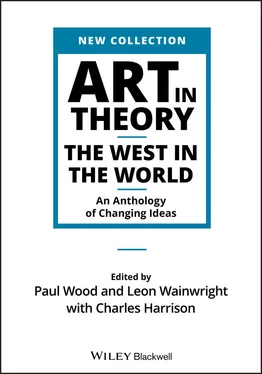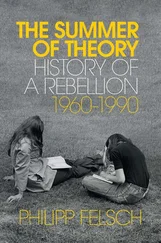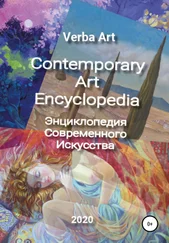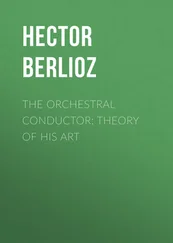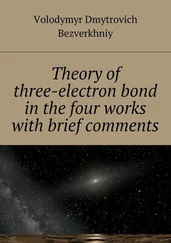Further selections concern the impact of an idealized notion of China, and the pervasive fashion for things Chinese which gained ground in Europe during the eighteenth century. These range from more or less plausible rehearsals of the virtues of Chinese material culture, especially gardens, to the quite different note struck by George Staunton’s deflationary encounter with the realities of China which derived from first‐hand experience gained during his participation in the British Embassy to China led by Lord Macartney in 1793. Standing somewhere between the idealized exotica and Staunton’s plain assessment of China stands Sir William Jones’s proposal to found a Society for the study of ‘Asiatick’ culture. Jones is now sometimes criticized for having relied on the researches of uncredited Indian assistants, but be that as it may, his Enlightenment‐inspired admiration for and curiosity about Indian culture stands in marked contrast to the normative attitude of British imperialists in the nineteenth century.
One of the recurring problems facing us in these early parts of the anthology, and discussed in the introduction to the book, concerns the relative unevenness of the written historical record: the fact that we have more textual accounts by European writers about their encounters with the wider world than we have reports by Arabic, Indian, Chinese, African or American writers of encounters with Europeans. Nonetheless, other kinds of trace do exist, notably those in the broad field of the visual arts. To single out only a few, these include Mughal miniature paintings in India, some of which contain figures in modern European dress as well as visual representations of motifs taken from the Christian Bible. Eighteenth‐century Japan saw the development of ukiyo‐e prints, depictions of the ‘floating world’ of contemporary urban modernity in the capital Edo – the very images which in the mid‐nineteenth century became a stimulus for French artists of the nascent avant‐garde seeking to arrive at adequate representations of their own ‘modern life’. Certain of the Japanese prints show clear evidence of a fascination with European perspective and play off against each other the characteristic effects of a Japanese engagement with surface, colour and contour and a European representation of perspectival recession. In West Africa, metalworking in sixteenth‐ and seventeenth‐century Benin grew out of a long indigenous tradition of bronze casting. Three‐dimensional cast metal sculptures often include images of Europeans, probably Portuguese mercenaries working for the Oba, as well as soldiers accompanying the Portuguese traders themselves. But something else is happening with the unique Benin ‘plaques’ which adorned the Oba’s palace. There can be no proof, but there is a possibility that these resulted from West African artists seeing two‐dimensional printed illustrations in Christian Bibles.
One of the most extensive of these interactions took place in eighteenth‐century China, where a number of Jesuit missionaries worked in the Qing emperor’s court in both map‐making and painting. Some became integrated into Chinese court culture and had long careers there, including Guiseppe Castiglione, who adopted the Chinese name Lang Shining, and worked in China from 1715 until his death in 1766. During this time he worked on many large‐scale paintings in what has been described as a ‘hybrid Chinese‐Western style’, recording important imperial events in which a Chinese approach to landscape painting is combined with European perspective space in which the figures are deployed. In both China and India, other hybrid forms of art evolved in which native artists painted European figures in a ‘native’ style, either for sale to colonial merchants or soldiers and their families to commemorate their time in the ‘exotic’ East, or for export sale in Europe itself. All of these kinds of visual art, as well as related craft work, if they can be read and accorded due prominence in the historical record, can enrich and complicate the sense we have of the multifarious encounters of people living in the wider world with the Europeans who forced themselves into those worlds in the centuries before fully fledged modern imperialism became the order of the day (cf. Wood, Western Art , 2014).
Section IIB involves a change of focus. Rather than Europe’s long‐standing fascination with the riches of the East, this section concentrates on the variety of ‘New Worlds’ that European expansion encountered in the eighteenth century. The first of these – America – had of course been known about for some time, and the earliest accounts can be found in Section IB. The Spanish plunder of South America had already made it for some time one of the richest countries in Europe. But by the eighteenth century, Spain was in decline, and it was the plantation economies of the Caribbean, based on the institution of quasi‐industrialized transatlantic slavery, that made the most notorious contribution to enabling Europe’s definitive take‐off into modernity. It was at this point that cities like Bristol and Liverpool, based on the proceeds of the ‘triangular trade’ between Britain, West Africa and America, became crucial building blocks for the emergent British Empire. The section includes several texts bearing upon questions of material culture, race and slavery in the Americas. And for the first time, we are able to record not only the accounts of Europeans but also the dissenting voices of those on the receiving end of European power.
The second main focus of this section lies on the other side of the world. By the final third of the century, the protracted struggle between Britain and France for global domination was in the process of being concluded. After the American revolution, Britain lost the United States, but in the same geopolitical shake‐out, gained India – which went on, of course, to become the so‐called jewel in the crown of the British Empire in the nineteenth century. We include here extracts from William Hodges’ late‐eighteenth‐century account of his travels in India, and the monuments he observed. Hodges’ narrative is one of the few extended reports by a professional artist of his own first‐hand reactions to the art of a distinctively different culture.
One of the extraordinary things about Hodges is that he had already had experience of an even more radically distinct society, having been the official artist on Captain James Cook’s second voyage to the Pacific in 1772–5. Hodges did not write about Oceania, but he left an unparalleled visual record of its people and their material culture. Cook had actually been preceded in the Pacific by the French navigator Bougainville, and it was Bougainville’s sensational account of Tahiti as a ‘new Cythera’ – the mythical birthplace of Venus – that set the tone for the early European perception of the cultures of Oceania. Cook’s prolonged encounters were of a different order. We have included a representative selection from the many thousands of pages of first‐hand testimony from the three Cook voyages. For the first time since Columbus’s discovery of America – more than 250 years earlier, be it noted – and for the last time in human history, an entirely unknown world fell under the gaze of European artists, scientists and adventurers. The accounts given here record the unstable mixture of admiration, puzzlement, disgust and more‐or‐less‐improvised recourse to comparisons with familiar things from Europe that made up the warp and weft of these encounters. Indeed, one of the hardest things for us to grasp about these first encounters with Pacific societies is that the Europeans involved – scientists and artists no less than seamen – almost literally did not know what they were looking at. Beyond the rudimentary category of the ‘noble savage’, and some sense of a distinction between ‘civilization’ and ‘barbarism’ derived from classical antiquity and bolstered by the experience of America, the eighteenth‐century travellers had little in the way of a conceptual framework with which to comprehend the worlds they had pushed themselves into. The Cook voyages form one of the most acute instances wherein eighteenth‐century proto‐Empire and eighteenth‐century Enlightenment found themselves walking side by side, and often they did not know what to do with each other.
Читать дальше
